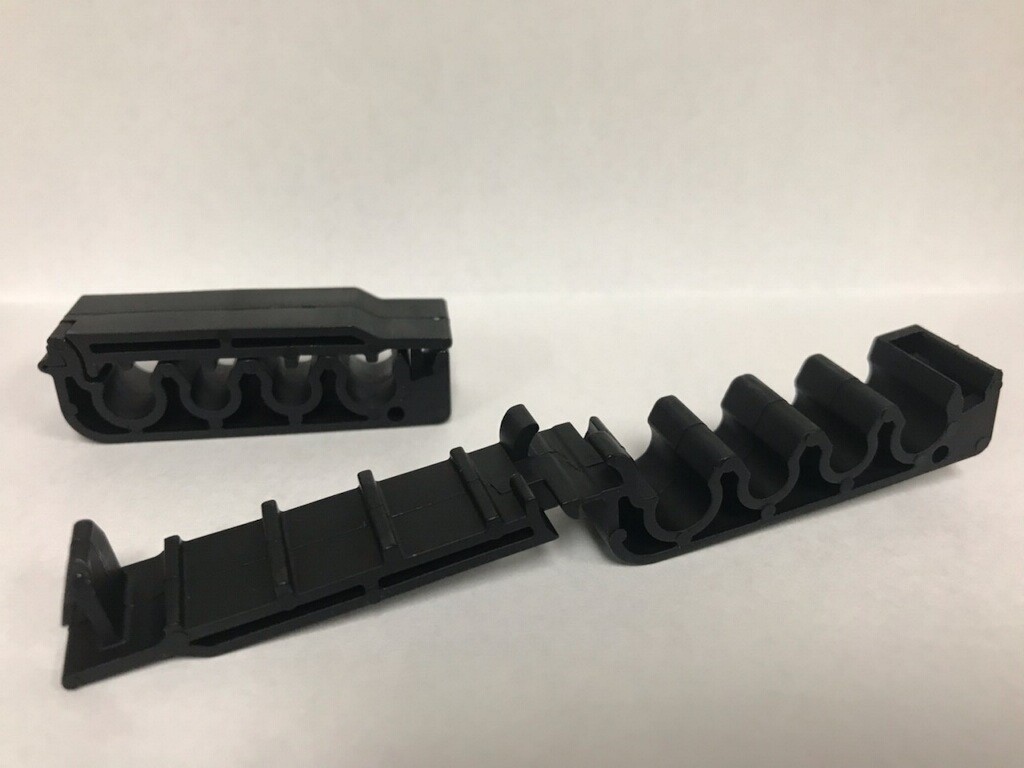Ford, HP Collaboration Turns 3D Printing Waste into Parts
Closed-loop process transforms recycled materials into injection-molded fuel line clips.

Ford and HP are collaborating on a closed loop for 3D printing material waste used to create new parts. Image Courtesy of Ford
May 24, 2021
Ford has long been a pioneer in steering 3D printing technologies for prototyping and eventually, production applications in the automotive sector. Now, with partner Hewlett-Packard (HP), it’s driving a new process that turns leftover 3D printed powders and waste into usable vehicle parts.
Building on their on-going partnership, the two companies have turned attention to a sustainability collaboration, transforming 3D printer powder waste into injection molded vehicle parts—an exercise the pair claim is an industry first. HP and Ford already have a relationship cemented around the advancement of 3D printing, including employing HP’s Multi Jet Fusion 3D printing technology at the company’s Advanced Manufacturing Center.
The recycled 3D printing powder waste is initially being tapped to manufacture injection-molded fuel-line clips, first installed on the Ford Super Duty F-250 trucks. However, the Ford research team has identified 10 other fuel-line clips on other existing vehicles that could benefit from the same materials and process, indicating its intent to broaden the sustainability program to other car models.
“Finding new ways to work with sustainable materials, reducing waste and leading the development of the circular economy are passions at Ford,” noted Debbie Mielewski, Ford’s technical fellow, sustainability, in a press release announcing the collaboration.
The fuel-line clips manufactured with the sustainable materials have better chemical and moisture resistance than conventional versions of the clips, Ford officials maintain. More, they ae 7% lighter and cost 10% less—added benefits of evolving the 3D printing program to accommodate a closed-loop process.
To get the project off the ground, Ford and HP also worked with SmiteDirectClub, an oral healthcare company that markets a system for straightening teeth and which operates the largest facility of HP 3D printers in the United States. The fleet of more than 60 HP 3D printers produces 40,000 aligners a day, and the discarded molds are collected and recycled with HP to create volume material for the Ford fuel-line clip application. Lavergne, a resin producer and recycling partner of HP, then processes the discarded molds and powder from the fleet of HP 3D printers and turns it into high-quality recycled plastic pellets. Those pellets are then molded into the fuel-line clips by ARaymond, another Ford supplier that designs and manufactures assembly systems. The effort is part of Ford’s stated intent to achieve 100 percent sustainable materials in its vehicles.
As part of its vision to integrate 3D printing into all segments of its product development and manufacturing processes, Ford is using 3D printing technology from Ultimaker to enable plant floor operators to make tools and fixtures on their own without help from experienced experts.
Watch this video to learn more about SmileDirectClub leverages 3D printing to produce teeth aligners at scale.
More Hewlett Packard Coverage
Subscribe to our FREE magazine, FREE email newsletters or both!
About the Author
Beth Stackpole is a contributing editor to Digital Engineering. Send e-mail about this article to [email protected].
Follow DE





